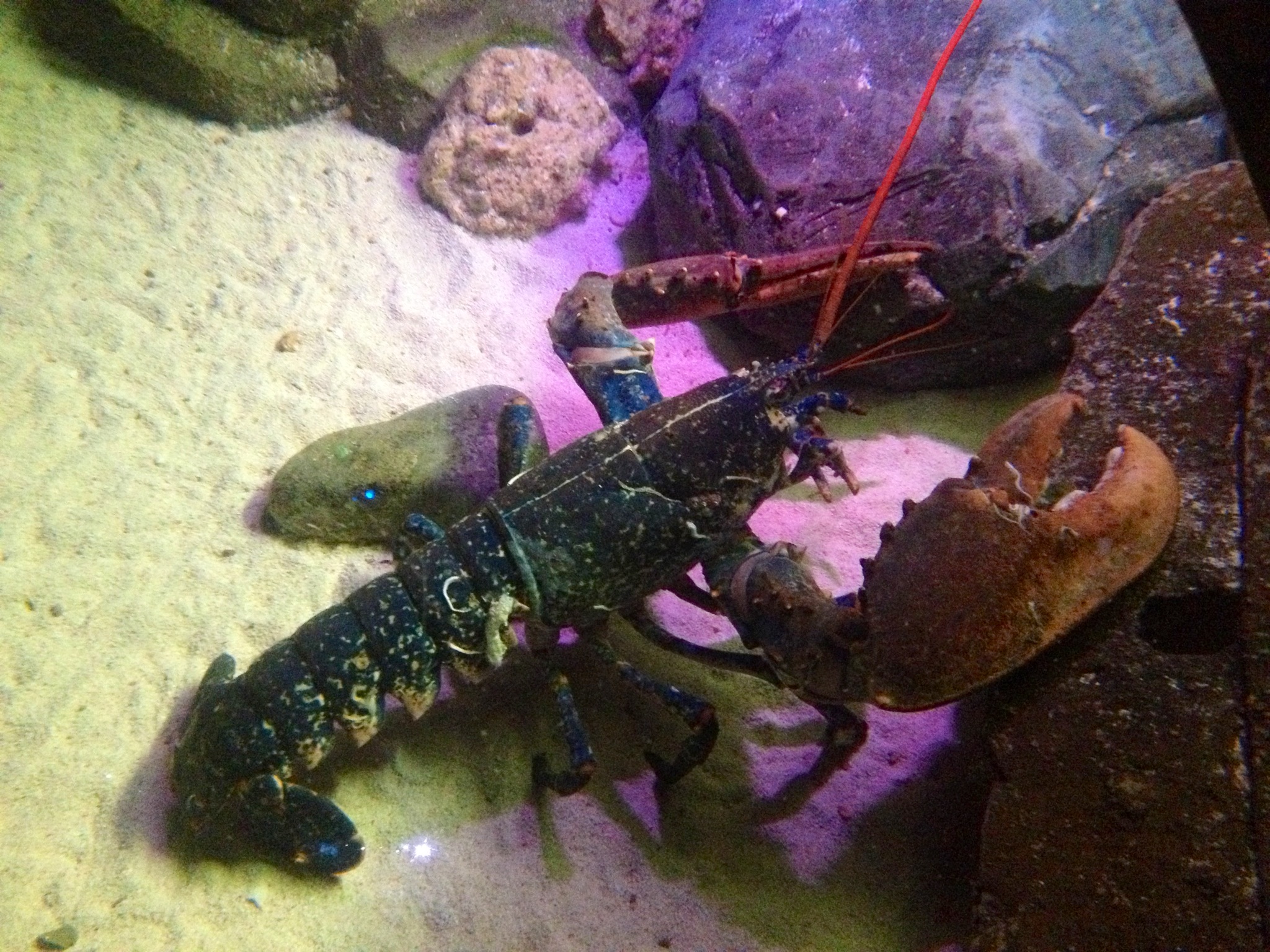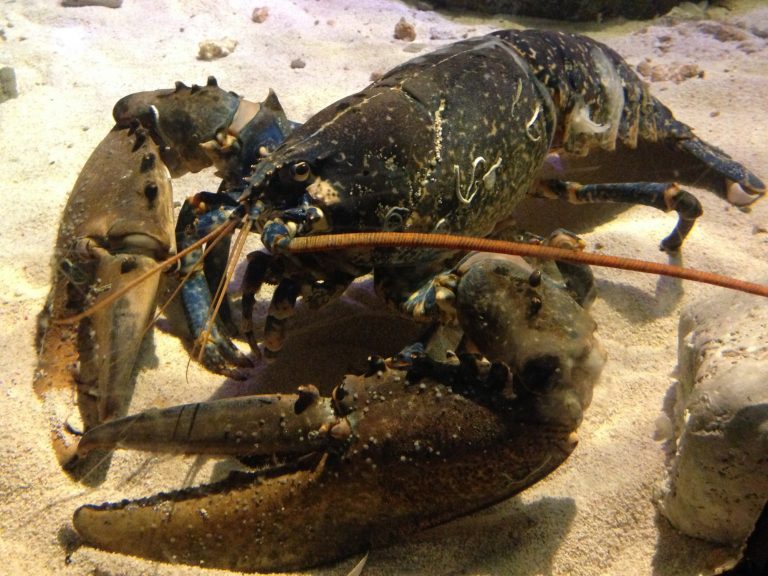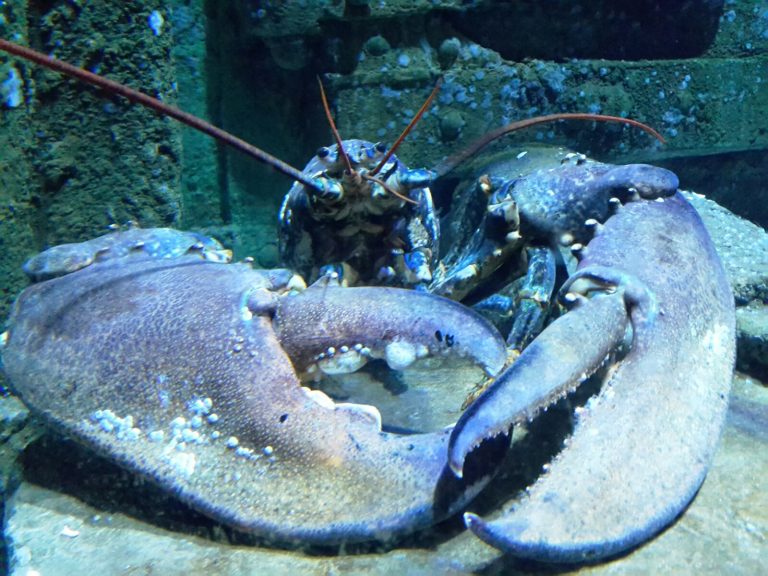
The common lobster (Homarus gammarus), is also known as the European lobster. They are generally a blue/brown colour, but can occasionally be found in other colours including orange. The red colour is normally associated with cooked lobster rather than live individuals.
Like all crustaceans, lobsters have a hard outer exoskeleton which helps protect them from predators. In order for them to grow the lobster needs to leave their exoskeleton, as it does not grow with them. The exoskeleton is shed, revealing a soft layer underneath that will harden. This moulting happens a few times a year for younger individuals, and slows down as the animal ages to once every one to two years.
Females can only mate when they have recently moulted when the exoskeleton is soft. Females carry their eggs for up to one year, depending on the surrounding temperature, before the eggs hatch.
Lobsters have an unusual way of getting rid of waste, which is by peeing from their eyes! Lobsters have openings at the base of their antenna which are connected to their bladder that they use to excrete waste products. Not all of their waste is gotten rid of this way, as some is excreted through their gills and digestive glands.
Lobsters claws are excellent for grabbing, crushing and defending. Though these claws are not the same size as each other, one will be bigger and one will be smaller. The larger claw is used to crush the shells and carapaces of its prey, whilst the smaller claw is used to grab its food and shred it into smaller manageable pieces.
Type
Crustacean
What do they eat?
Invertebrates, crustaceans and molluscs
Size
60cm
Water Type
Sea floor
Where are we?
Atlantic Ocean and Mediterranean Sea


